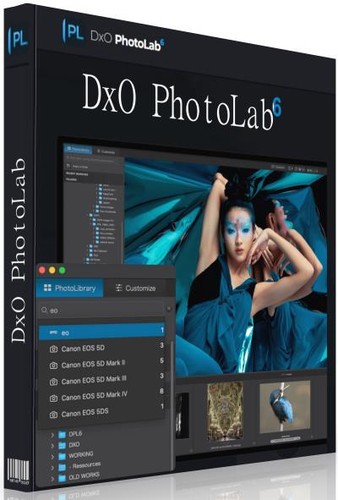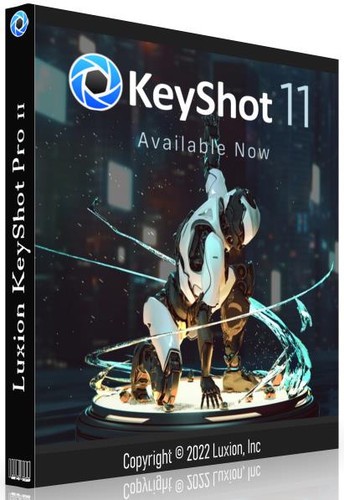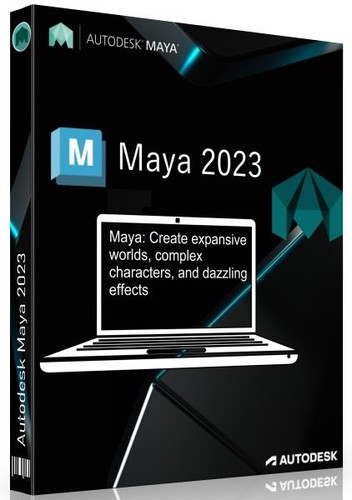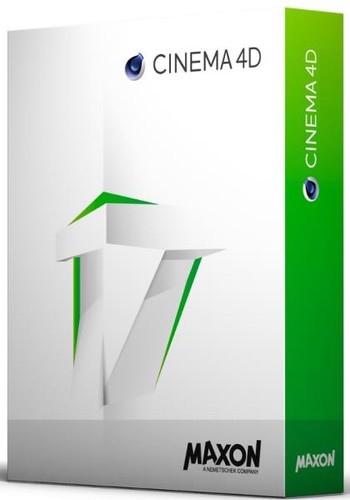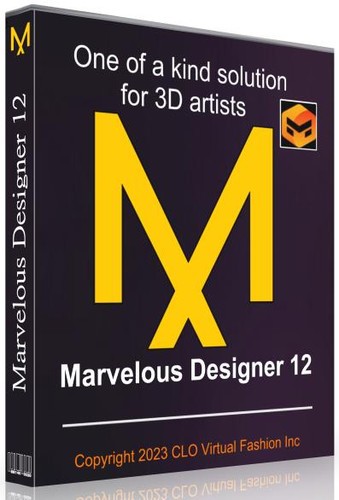
GraphiSoft ArchiCAD — это мощное приложение моделирования, которое позволяет архитекторам более эффективно проектировать здания с использованием технологии Virtual Building. ArchiCAD позволяет архитекторам сконцентрироваться именно на проектировании, выполняя эту работу самостоятельно или в коллективе, обмениваясь при этом данными с консультантами и специалистами в других областях. С ArchiCAD вы откроете для себя преимущества архитектурного проектирования в 3D-пространстве и получите наслаждение от невероятной свободы в работе.
В ArchiCAD, вы создаете в Информационную 3D-Модель Здания, на основе которой автоматически генерируются все необходимые документы и изображения. Проект обретает жизнь и развивается на экране одновременно с работой Вашей мысли, позволяя сосредоточиться на творчестве. Информационное моделирование здания является наиболее естественным и интуитивно понятным подходом к проектированию, а благодаря понятности 3D-представления проектов, заказчики будут впечатлены Вашим творчеством.
• Знакомство с инструментом МОРФ. В ArchiCAD появился новый инструмент, называющийся «MORPH» (МОРФ) и предназначенный для свободного моделирования.
• Компоненты инструмента МОРФ. Объекты, созданные инструментом МОРФ, состоят из трех компонентов: узел (вершина), грань и поверхность.
• Создание полигонального объекта МОРФ. Первый способ построения объекта МОРФ — полигональный. С помощью него вы сможете построить замкнутый контур — фактически МОРФ-грань.
• Создание полигонального 3D-объекта МОРФ. Полигональный объект никак не привязан к одной плоскости — любой узел может занимать в пространстве любое положение, создавая таким образом пространственный полигон.
• Создание прямоугольных, дуговых и замкнутых МОРФ-элементов. В целом существует четыре типа построения МОРФ-элементов: «прямоугольник» и «повернутый прямоугольник» для создания прямых элементов, «центр и радиус» и «точки на кривой» для создания криволинейных элементов.
• Создание 3D-коробки из МОРФ-элементов. Метод построения Коробка создает твердотельный объект. Первые две точки задают основание коробки, а третий — высоту.
• Создание скругленных МОРФ-элементов. И третий метод построения — скругление. Строится в три шага, при этом сначала надо задать профиль.
• Выбор подэлементов. Каждый МОРФ-элемент состоит из подэлементов, которые можно выделить для дальнейшей работы. Выбор нескольких подэлементов. При этом вы можете выбрать несколько подэлементов сразу.
• Удаление подэлементов МОРФ. В любой момент выделенный подэлемент МОРФ можно удалить, редактируя таким образом структуру МОРФ-объекта.
• Работа с гранями и поверхностями. При этом к уже существующему МОРФ-элементу можно добавить новую геометрию — грань, поверхность или солид-объект.
• Настройка возвышения МОРФ. Как и любому другому 3D объекту, МОРФ-объекту можно задать возвышение — этот параметр называется Базовая высота.
• Отображение МОРФ-элементов на плане. На поэтажном плане МОРФ-элемент отображается как 3D проекция — также как и сложные кровли или оболочка.
• Настройка покрытий у МОРФ-элемента. В диалоге параметров МОРФ-элемента можно задать базовый материал покрытия, который затем применяется ко всем граням объекта.
• Настройка методов разбиения граней у МОРФ-элементов. Любая грань МОРФ-элемента имеет три режима построения, которые влияют на принципы формирования поверхностей и их отображения.
• Изменение текстур граней у МОРФ-элементов. По умолчанию метод наложения текстуры на МОРФ-объект — коробочный. Но пользователь может задать свой метод наложения для каждой грани — вплоть до сферического наложения.
• Изменение начала координат и направления у текстур МОРФ-элемента. Для каждой грани МОРФ-элемента можно задать свою начальную точку распространения текстуры и ее угол поворота.
• Перемещение узла МОРФ-тела. Любой узел МОРФ-элемента можно свободно переместить в пространстве, меняя таким образом общую структуру объема и привязываясь к другим узлам, граням объектов.
ArchiCAD существенно меняет возможности среднестатистического пользователя, позволяя применять сторонние BIM-компоненты в своих проектах. В связке с «облачной» базой данной новые возможности моделирования в ArchiCAD позволяют архитекторам создавать, искать, загружать и скачивать новые BIM-компоненты для использования в своих проектах. Полностью интегрированный в ArchiCAD веб-портал является единым центром обмена BIM-компонентами между пользователями. BIMcomponents.com также обеспечивает централизованное место размещение для всех GDL объектов, делая их доступными всем пользователям ArchiCAD, когда им это необходимо. В строительной индустрии все постоянно меняется: каждый день появляются новые материалы, конструкции, идеи и технологии. Можно сказать, что компоненты здания – это одна из самых активно развивающихся областей в строительной BIM-индустрии. Технология GDL, используемая в ArchiCAD, является мощным профессиональным инструментом для создания высокоинтеллектуальных параметрических элементов. Однако не все пользователи готовы создавать свои GDL-объекты. Именно им адресуются фундаментальные изменения, произошедшие в ArchiCAD! Теперь любой пользователь может не только смоделировать свой объект в объеме, но и выложить созданный BIM-компонент в единую облачную базу объектов.
Для вновь добавляемых объектов заводится уникальное описание, по которому другие пользователи посредством ключевых слов могут моментально найти не только этот объект, но и десятки похожих. Затем остается лишь подобрать необходимые для вашего BIM-проекта элементы и загрузить их одним щелчком клавиши мыши. Уникально, что все описанные операции осуществляются в рамках ArchiCAD – программа предоставляет полный набор инструментов для создания, поиска, загрузки и выгрузки объектов непосредственно из диалога Объекты! Кроме того, все выкладываемые BIM-объекты можно найти на специализированном веб-портале BIMcomponents.com, предоставляющем для самоорганизации сообщества пользователей ArchiCAD необходимые средства: комментарии, рейтинги объектов, обновления и т.п. Таким образом, новая технология загрузки\выгрузки BIM-компонентов и новый сайт – это уникальный централизованный ресурс по обмену GDL-объектами!
Все современные здания и проекты должны быть экологичными и энергоэффективными – это наш вклад в будущее планеты. Мы считаем, что главные решения по эко- и энергоэффективности здания должны приниматься архитекторами еще на начальных стадиях работы над проектом, а не инженерами, когда любые изменения внести намного сложнее. В своих программах компания GRAPHISOFT продолжает развивать «зеленое» направление и внедрять инструменты экологического анализа в среду BIM-проектирования. Встроенный в ArchiCAD новый функционал по анализу энергоэффективности (например, анализ геометрии модели здания посредством границ зон, анализ погодных условий и т.д.) похож на ранее поставляемый самостоятельный программный продукт EcoDesigner™, но отныне базируется на абсолютно новой технологии, которая позволяет произвести анализ модели в динамическом режиме, используя BIM-геометрию, почасовую погодную информацию и данные о расположении здания.
Энергетический анализ:
— Подготовка модели здания к анализу
— Общие правила моделирования
— Работа с зонами
— Обзор энергетической модели
— Отображение списка конструкций
— Отображение списка проемов
— Визуализация энергетической модели здания
— Настойка цветов отображения
— Калькулятор U-параметров
— Настройка тепловых параметров
— Каталог материалов
— Работа с могослойными конструкциями и U-параметрами
— Переназначение U-параметра
— Определение утечек
— Определение поверхностей
— Настройка стеклянных и фреймовых структур
— Настройка тени и затеняющих объектов
— Настройка среды: расположение и климат
— Настройка среды: уровень, грунт и окружение
— Работа с профилями
— Работа со стуктурой здания
— Настройка источника энергии и цены энергии
— Работа с «зеленой» энергией здания
Design
Unleash your creativity with the leading building information modeling software developed by architects just like you. Algorithmic design tools and large model support let you do what you do best: design great architecture.
Analyze
Spend your time designing great buildings — not worrying about the quality of your model. By connecting Archicad with the best-in-class analysis tools on the market, you’ll identify and solve issues in the earliest stages of the design. All this adds up to a more accurate design that’s easier to build and less expensive to operate.
Collaborate
Work with teams around the corner or around the world on projects of any size or complexity. No more waiting thanks to real-time instant messaging. Clash detection and resolution are fast and easy regardless of what other software team members may be using.
Document
Complete ‘out of the box’ documentation sets, combined with a powerful publishing workflow that complies with local BIM requirements, means you can focus on your designs, not the paperwork.
Visualize
Bring your models to life with Archicad’s built-in palette of architectural visualization software. Our VR and rendering tools were designed to help anyone understand and navigate the BIM model. Understanding the model means decisions and changes can be made in the early design phases, saving time, money and aggravation on the building site.
New Native Survey Point
Streamline your coordination workflows thanks to the native Survey Point in Archicad 25. The Survey Point enables easier, centralized handling of real-world coordinates in all Open BIM workflows. Survey Point supports IFC and BCF file exchange, and also provides better interoperability with conventional (e.g. DWG) file formats.
Easy migration from Revit to Archicad
Re-use previous project files when migrating from Revit to Archicad, thanks to the RFA & RVT geometry exchange functionality. Available out-of-the-box with Archicad 25, with support for Autodesk Revit 2021.
Interoperability with Revit
Better collaboration with engineers using Revit MEP software. Support for Revit file formats up to 2021 is now built in to Archicad. Import RFA as a native Archicad Object and create MEP equipment from Revit Family files. Export a 3D model as Revit 3D geometry and hotlink a 3D RVT model. Archicad now handles Revit’s Discipline filter, so when you hotlink a Revit file, what you see in Revit is what you get in Archicad.
Solibri connection improvements
Solibri is the industry leading code- and constructability checking application. Save time and eliminate the errors in roundtrips thanks to the Archicad-Solibri Connection add-on, free for all users. With the latest improvement, you can select Solibri’s current Selection Basket items in Archicad and view them in the same camera position.
Generation Rules Enhancements
Generation Rules help the structural engineers to avoid heavy manual work on Structural Analytical model. Archicad 25 now comes with a few novelties (such as Improvements of Offset Adjustments and Connection Range, Eliminating Overlapping Parts of 2D Members, and Streamlined Structural Supports.)
New Handling of Structural Loads
Collaborate with structural engineers without data loss. During roundtrip engineers add information to the model, such as loads and loads-related data on their preferred structural analysis tools. When opening the engineer’s SAF model, Archicad 25 correctly displays loads and load data. View and manage loads and load-related information, such as load cases and load combinations. Structural engineers can also adjust or add new loads in the Archicad model.
Automatic Export Mapping of Manufactured Profiles
Save time and effort when exchanging files with structural engineers. When exporting structural elements as part of SAF-based data exchange, Archicad 25 now automatically maps them to manufactured profiles, based on a predefined or customized database.
New residential and commercial furniture
39 new contemporary furniture and decorations objects – such as new modular kitchen cabinets, sofa beds, cloth hangers, curtains, coat racks, tables, chairs, mattresses, and grills are now part of the default Archicad library – totaling over 1,300 parametric objects already.
Quick shift between 2D/3D views
You’re working in 3D, but would prefer to edit a component in 2D? This is now seamless: Simply select the element and open it in any other view. Moving back and forth from 2D to 3D is just as easy.
Polygonal Openings
Take advantage of more precise quantity estimations. With custom-shaped polygonal wall openings, create holes of any shape which exactly fit your MEP elements – resulting in more accurate quantities.
Rhino 6 and 7 connection improvements
Import and export Rhino 6 and Rhino 7 files to leverage the power of the industry-leading free-form organic design tools, then switch to Archicad to continue the design development and documentation processes.
New Along Chord stair construction geometry method
Define the length of the walking-lines of stairs that comply with specific local standards. The existing Along Arc geometry method is still available.
New tread symmetry combinations for all winder types
A new stair winder option is now available: Turning Point – Asymmetric Going. Define and edit custom stairs that follow your design intent quickly and easily.
New Stair Landing control
Now the extra landing length can be automatically distributed equally from the landing start or from the landing end. This is useful when an existing staircase must be adapted to changing design environment.
Display of surface textures in sections and elevation views
Communicate your design in life-like detail. Display your surface textures directly in section and elevation views in Archicad without the use of additional editing software.
Realistic soft-shadow and cover fill option on textures
Present your design with accurate, artistic details. Use soft shadows to add contours and depth to your surfaces in section and elevation views. Overlay textures with the pattern fill of your choice. Your client gets a better picture of the model, and you benefit from faster approval.
New Graphic Override Options
Enjoy more flexibility in communicating your design. New controls in Graphic Overrides include custom RGB color for both Surface and Fill Background Pen overrides; surface transparency; and off/on display of contours on cut and uncut surfaces in model views.
New Labeling option for MEP elements
Automatically display MEP-related information for a smoother MEP documentation workflow.
Supported Operating Systems:
Windows 10
Recommended Hardware:
— Processor: 64-bit processor with four or more cores
— RAM: 16 GB or more is recommended; for complex, detailed models 32 GB or more may be required
— Hard disk: installing Archicad on a SSD drive is recommended; 5 GB free disk space is required for the installation, 10 GB or more is required per active project
— Display: A resolution of 1920 x 1080 or higher is recommended
— Graphics card: Dedicated OpenGL 4.0 compatible graphics card is recommended to fully exploit hardware acceleration capabilities. 2 GB+ VRAM is recommended, opt for 4 GB+ with 4K displays.
Minimum Hardware:
— Processor: 64-bit processor with two cores
— RAM: 8 GB
— Hard disk space: 5 GB or more is required for the installation
— Display: A resolution of 1440 x 900 or higher
— Graphics card: OpenGL 3.3 compatible graphics card with on board memory of 2 GB
25 Build 5010
• DEF-5748 FILE/EXPORT: When publishing a layout, autotexts in a custom drawing title would duplicate if the layout had more than one drawing.
• DEF-8186: Archicad crashed on macOS 12.3 if user closed a tab using the “X” icon, or hovered the mouse over this icon.
25 Build 5005
DEF-1167 FILE/CRASH: Archicad sometimes crashed due to a missing graphic override combination in the view map settings for details and worksheets.
DEF-1318 MODEL: The cut fill surface on sections were overrided even when analytical model visibility was turned off.
DEF-1785 MODEL: A column which was slanted by 89,75° was rendered and considered vertical on section.
DEF-1990 DOCUMENT: If the partial structural display was set to Core Only, the automatic dimension in the schedule would be missing for doors and windows.
DEF-2430 USER INTERFACE: The Python palette could not be used without an internet connection.
DEF-2836 MODEL/VIEW/SCHEDULES: The MVO option changes from the view settings wasn’t affecting the 2D plan preview or the 3D axonometry fields in schedules.
DEF-2858 FILE/IFC/EXPORT: Corner window with reveal resulted in glitchy model, that lacked some mitering, when exported as IFC.
DEF-2988 MODEL: Elements in locked, invisible layers could be deleted via Reset Renovation Status function.
DEF-3025 MODEL: On layouts, when the label contained autotexts, its pointer failed to connect to the middle of the first row or last row.
DEF-3216 SECTION/VIEW/LAYOUT: The view and the layout render was not the same for a staggered segmented section that had its option Break Segments unticked.
DEF-3399 CRASH: Archicad crashed when the parameter transfer eye dropper was used on columns with complex profiles in sections/elevations.
DEF-3833 MODEL: The drawings on layout used the MVO setting from the latest open view.
DEF-3934 CRASH: A change marker’s bounding box was visible from closed transmittals which resulted in a crash.
DEF-3964 EDIT: The “Delete markers” option did not delete the markers placed on a hidden layer.
DEF-4074 USER INTERFACE: On macOS Big Sur, panning was reversed and zooming caused screen artifacts.
DEF-4117 CRASH: A stair with a winder crashed Archicad.
DEF-4383 BIMcloud/CRASH: Archicad sometimes crashed while browsing a library location on BIMcloud on a slow network.
DEF-4657 CRASH: Archicad crashed sometimes while dimensioning a revolved shell that used a full circle as a basis.
DEF-4669 FILE/IFC/EXPORT: 1mm thin walls sometimes failed to export to IFC.
DEF-4741 CRASH: The Navigator Preview palette was the source of a crash.
DEF-4767 FILE/IFC/EXPORT: When using “Update with IFC-Model”, the update process could not identify doors or windows as child objects of a wall, so they were not updated.
DEF-4811 CRASH: A damaged PLN could cause Window’s File Explorer to crash.
DEF-4881 DOCUMENT: 3D views did not automatically update in layouts.
DEF-4933 MODEL: Archicad could not create a U-shaped stair with two flights touching in the middle.
DEF-4953 CRASH: Archicad crashed when opening a schedule (Flächenberechnung) managed by an add-on.
DEF-4955 BIMcloud/DRAWING MANAGER: the drawing manager could take more than 9 minutes to open due to icon collection.
DEF-5126 FILE/IFC/EXPORT: When exporting in IFC format, the grid elements of a mesh classified as “ifcGeographicElement” were missing, but if classified as “ifcSite” then they were exported correctly.
DEF-5336 TEAMWORK/CRASH: A project with a dimensioned stair often crashed Archicad during the share process.
DEF-5482 CRASH: Archicad crashed on exit with macOS Monterey (version 12).
DEF-5516 USER INTERFACE: On macOS Monterey (version 12), the open and save dialogs were not resizable.
DEF-5532 MODEL: Interior Elevation viewpoints and views were deleted if a detail was created on section when the Issues Manager was in use.
DEF-5582 CRASH: Archicad sometimes crashed while updating a layout, with a placed view open.
DEF-5671 DOCUMENT/CRASH: Virtual trace with a layout sometimes resulted in a crash.
DEF-5704 BIMcloud: Join was sometimes not possible with corrupt library data.
DEF-5707 CRASH: A 0 radius arc or circle crashed Archicad. These elements are often the result of exploding an object.
DEF-5816 FILE/OPEN/CRASH: Starting two Archicads simultaneously sometimes resulted in a crash.
DEF-5861 CRASH/FREEZE: Viewing section/elevations containing morphs with more than 10000 hotspots sometimes froze Archicad, leaving the user no other option than to force quit.
DEF-5895 USER INTERFACE/CRASH: Use of element information palette sometimes resulted in a crash.
DEF-5914 USER INTERFACE: When customizing menus and toolbars in the Work Environment, the new Survey Point commands were not listed when sorted by “All commands in alphabetical order” or “All new commands in alphabetical order”.
DEF-5935 FILE/OPEN: An invalid stair prevented a project from being read.
DEF-6001 CRASH/FILE/IFC/EXPORT: Doors with 0m width and windows with 0m height caused Archicad to crash during IFC export.
DEF-6049 FILE/SAVE: Unused view settings caused large file size increase.
DEF-6116 MODEL: A custom boundary stair ending with tread could cause incorrect zoom on floorplan after using “Fit in Window”.
DEF-6162 DOCUMENT/CRASH: The 3D document crashed when some symbol fills were in use.
DEF-6231 CRASH: Archicad crashed at start up on some installations due to a incorrectly configured cache folder.
DEF-6233 DOCUMENT: With US project preferences of feet & fractional inches angular dimensions could not be set to decimal degrees.
DEF-6258 CRASH: Missing Override Combinations caused crash.
DEF-6576 DOCUMENT: Dimensions associated with wall corners sometimes went missing.
DEF-7210 DOCUMENT: Dimensions were placed at the wrong position on drawings in the layouts due to drawing update.
DEF-7552 DOCUMENT: Pointer in Radial dimension was randomly positioned outside of the curve.
DEF-3579 HOTLINK: It was not possible to change the master layer of a hotlink instance via API.
Информация о программе:
Год выпуска: 2022
Платформа: Windows® 10 (64-bit only)
Язык интерфейса: English / Английский
Лекарство: crack
Размер файла: 3.99 GB
Скачать GRAPHISOFT ARCHICAD 25 Build 5010 (ENG/2022)
Скачать с Turbobit.net
Скачать с Nitroflare.com
Скачать с Uploaded.net
Скачать с Hitfile.net
